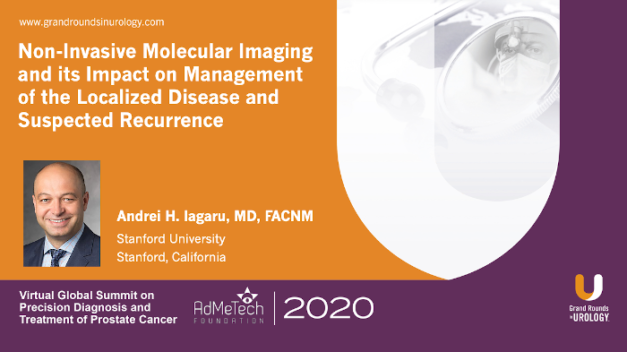Molecular Imaging
Andrei H. Iagaru, MD, FACNM, discusses the roles of nuclear medicine modalities, prostate-specific membrane antigen (PSMA), and theranostics in the treatment of prostate cancer. He notes that three specific modalities – PET/MRI, PET/CT, and SPECT/CT – can all contribute to the prostate cancer treatment process. Dr. Iagaru explains the tracer principle in nuclear medicine and describes the PET/MRI and PET/CT modalities, noting that PET/MRI is useful in the early stages of prostate cancer. He describes the replacement of PET/MRI with PET/CT in later prostate cancer stages, followed by the application of SPECT/CT.
Dr. Iagaru then reviews the importance of PSMA and its aid in identifying clinically significant prostate cancer. He cites data on PSMA use for biopsy guidance and high-intensity focus ultrasound while also referencing studies showing value in patients with high-risk prostate cancer undergoing PSMA PET/MRI before prostatectomy. He then reviews PSMA at biochemical recurrence, citing the CONDOR study and a study from Stanford University, the latter of which found a 65% positive 18F-DCFPyL PET/CT scan rate among patients with prostate-specific antigen (PSA) under 0.5.
Dr. Iagaru stresses the importance of modern scanners, highlighting the inability of 20-year-old scanners to track PSA under 0.5. He then demonstrates the use of PSMA theranostics in prostate cancer treatment by explaining diagnostic and therapy compounds, highlighting VISION trial results and subsequent approval of the 177Lu-PSMA-617 therapy. Dr. Iagaru refers back to SPECT/CT use and emphasizes its capabilities in post-treatment evaluation and theranostic considerations. He concludes with praise for nuclear medicine advancements in the treatment of prostate cancer, signaling the reality of personalized medicine thanks to molecular imaging, theranostics, and new data.
Read More

